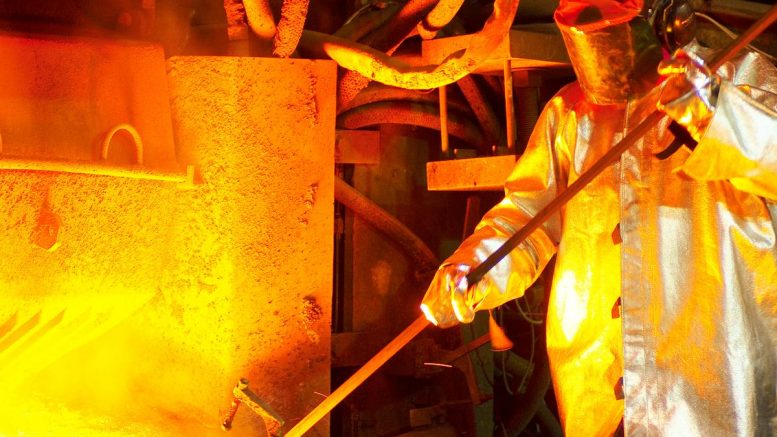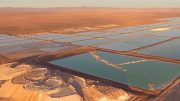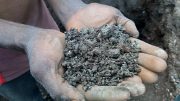For Scotiabank senior economist Marc Desormeaux, forecasting what the 2021 global commodity markets will be like, especially for industrial metals, is heavily predicated on the ability of nations to respond to Covid-19 in the new year. Speaking to The Northern Miner, Desormeaux talked about the importance of dealing with the virus, while also discussing the impact a new administration in Washington under president-elect Joseph. R. Biden, Jr., will have on U.S. economic recovery, as well as how China’s already surging recovery will remain a major influence on global mining markets.

Marc Desormeaux
The Northern Miner: What do you think the metals markets are generally going to be like in 2021?
Marc Desormeaux: Well, most of the industrial metals are entering 2021 with some pretty strong momentum, and we anticipate that going into the new year global demand recovering as we start to come out of the pandemic. Expectations of an economic rebound should continue to see support for industrial metals’ prices.
The industrial metals complex has witnessed quite a significant rebound from the early year troughs that we saw at the height of the lockdown period. Iron ore, zinc, nickel – they’ve all increased by 40-45%, at least, since that early year trough. There’s been a lot of momentum across the complex.
TNM: What are your thoughts about some of the major regions around the world in the new year?
MD: China, of course, is the world’s largest metals consumer, and we expect their economy to continue to grow. It’s been an outperformer in the global downturn that’s come with Covid-19. And it’s strong rebound persisting is something that we expect. So, certainly from a commodities perspective, as well as from a global growth perspective, China is important and will continue to be important.
Outside of China, we expect the U.S,. to start to come out of this downturn more meaningfully in 2021, and Europe as well.
In South America, we are watching some commodities. For instance, iron ore production is lower than we had previously anticipated, as indicated by the recent announcement by Vale of lower production output. That’s something that could certainly contribute to tightness in the iron ore markets.
We’re also watching closely for the extent to which supply disruptions occur in Chile and Peru, two of the major producers of copper. If those materialize, we could see some further upward pressure on copper prices.
TNM: Can you expand a little on iron and copper: Are there any concerns about the metals markets, such as the early December recent announcement that Vale would not make its 2020 iron ore production targets?
MD: Certainly, Vale is major global producer of iron ore and with lower anticipated production coming from them, that contributes to tightness in the markets. And on top of that, we’ve got Chinese fiscal stimulus going ahead that’s contributing to very strong steel output, steel manufacturing activity. With China expected to continue to expand going into 2021, our most recent forecast has them growing by 8.5%. That demand side, upward pressure on iron ore prices, is something we expect to remain in place and continue to provide support for the price.
And copper always gets a lot of attention from the point of view of markets. It’s been trading near its highest value since early 2013, so that’s really a lot of momentum there. It’s benefited from the improvement in risk sentiment, vaccine news, Chinese stimulus, so [copper] is one we certainly be watching closely.
TNM: What sort of impact on markets do you foresee from the incoming U.S. administration, both globally and domestically?
MD: There’s a number of things to think about in terms of the Biden administration and the impact that that could have on the global economy. There’s trade, and there’s stimulus. And those are really the two factors that we are heavily focused on.
In terms of trade, we do expect a degree of ‘America-first’ type policy making to persist into the new year. But trade policy should be, in our view, more conventional under a Biden administration, and that should help to unwind some of the uncertainty that has weighed down industrial sector activity over the last few years.
The other question is around stimulus, and we’ve argued many times that more fiscal support is critical for the U.S. economy’s recovery. That’s something – passage of a stimulus bill – that could be held back by partisan gridlock. And so, on that front, the outcome of the Georgia senate run-off elections in early January will be very important. We do suspect that some stimulus will go ahead in any case, but there’s a potential upside on that front which revolves significantly on the ability of the two parties in Congress to get along and ultimately pass that package that can support the U.S. recovery.
TNM: How much support do you think the new Biden administration will be able to provide to the U.S. mining industry?
MD: If we were to see a stimulus package towards the upper end of the ranges being proposed, that’s something that really could provide support for the recovery, and ultimately the mining sector, on the demand side of their economy. So, that’s really what we’re watching most closely when we think about risks to the outlook and ultimately to the factors that are impacting commodity prices into the new year.
TNM: What about the Canadian mining industry’s challenges in 2021?
MD: The main thing that we’re weighing here is the impact of Covid-19. On the one hand, we’ve had positive news on vaccine development and that appears to be happening earlier than we anticipated. That’s positive, in terms of getting back to some form of normalization earlier, and re-opening of the economy earlier.
But in the more immediate near term, we’re dealing with significant increases in infection rates across most of the country. So ultimately, broadly, that‘s what will impact the course of the Canadian economy: the course of the virus’ evolution and consumers’ and businesses’ response to it.
TNM: Overall, what are the darkest clouds looming as we start the new year?
MD: What happens with Covid is key to the economic outlook, it is key to demand for everything, but in particular for commodities. So, if there were a situation in which multiple future waves of infection did materialize, certainly that would present downside risk for the entire Canadian economy, as well as the mining sector.
But over the next few quarters of 2021, the bigger question is kind of the timing of the [Covid-19] vaccine: when we might start to see mass production, mass inoculations. And weighing that against some pretty significant surges in infection rates across a number of different countries. That’s something that will underpin economic activity broadly, and ultimately impact commodity prices. Again, it’s just that so much is dependent on Covid-19.
This interview has been edited and condensed.






Be the first to comment on "Scotiabank’s Marc Desormeaux looks at 2021 and the continuing impact of Covid-19 on metals markets"